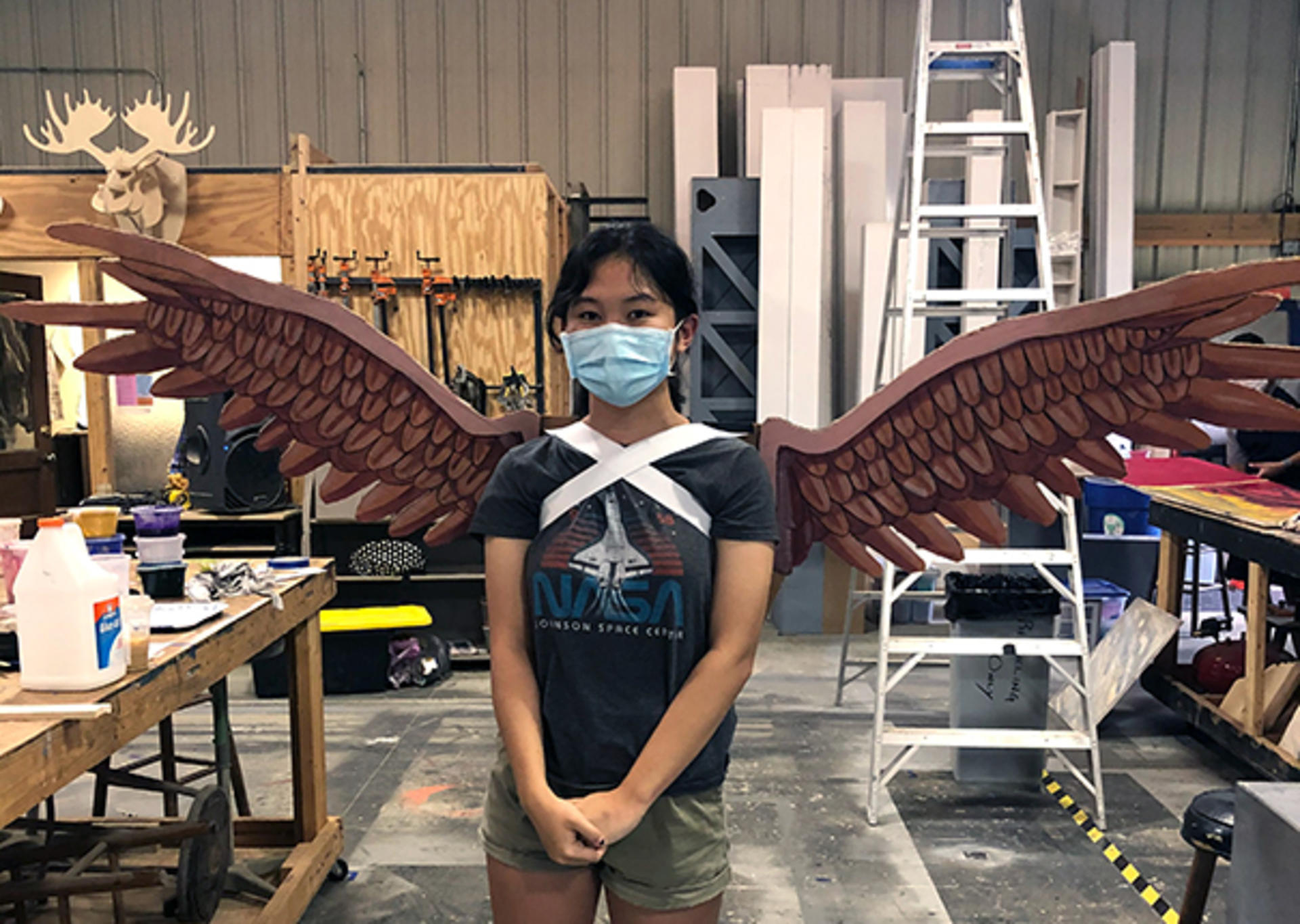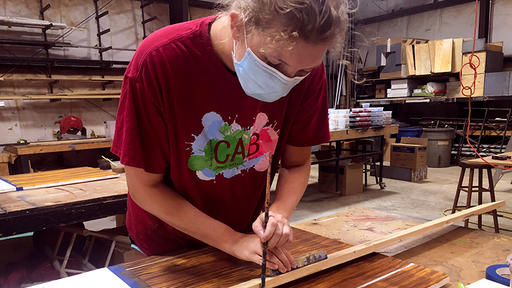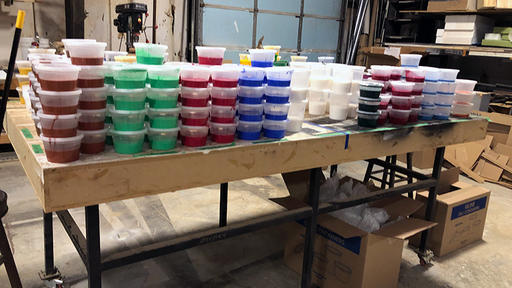
Combine art and theater in the middle of a pandemic? Professor of Theatre Studies Robin Vest tackled this seemingly impossible task with her innovative scene-painting course.
An art form many are unfamiliar with, scene painting plays a large role on every set. Scene painters are involved in productions ranging from ballet and theater to TV and movies. Consider — backdrops, furniture, sculptures, floors, and more are all touched by scene painters. Crash pads have to look like real-life backgrounds. Cables running up walls have to blend in.
“Scenic painters are in charge of every paint treatment you see when you go to the theater,” Robin says. “They have to learn to work on different surfaces and work vertically. It’s very skills-based.”
Inspired by a picture of a young girl wearing wings to keep a safe social distance from others, Robin quickly incorporated this idea into her course. One of the first projects her students worked on was creating a set of their own wings. Robin gave students the design they had to recreate. They then learned how to properly mix colors, mirror someone else’s work, and create a wearable item. These are all technical skills needed for a successful scene-painting career.

“I learned to be patient and to trust the process,” says Modern Language Studies (German) and Theatre Studies double major Sarah Seguin ’22. “There were several times where I would paint something and be unhappy with how it looked in the moment. As I kept going those mistakes became more and more subtle as I put more paint on the canvas. They gave the piece more character later on.”
Students’ final projects added an element of collaborative learning to the mix. In small groups, they had to paint one cohesive drapery, each working on their own 2-foot-by-4-foot section. The key was creating a final piece that looked like it had been painted by one person. Students also analyzed each other’s work, collaborated on solutions, and married styles to create a cohesive product.
Painting in a Pandemic
Robin implemented a variety of health and safety precautions to keep students protected from coronavirus. “I appreciate everyone who helped make it possible,” she says. She says she’s thankful for additional cleaning from the housekeeping team and for the opportunity to utilize Guilford’s scene shop. Her original classroom is being used as a COVID-19 testing space.

During class, students wore masks, painted outside, and kept their distance. Rather than sharing large gallons of paint, they came to Robin’s “paint store,” a table with various colors portioned into small plastic cups, which were daily sanitized. Plus, students rotated who was in charge of cleaning up after each session.
“The COVID safety precautions made us stop and think about how to maneuver around a space when all of the students need to share the same materials,” Sarah says. “Because of these safety precautions I felt really secure.”
“Despite the circumstances, despite the social-distancing and less time, still seeing a lot of growth in each student has been really exciting,” Robin says. “I had the time of my life. It’s the most fun I’ve had teaching probably ever.”
Schedule your personalized visit today to learn more about Guilford’s Theatre Studies Department and the College’s transformative, collaborative learning environment.

